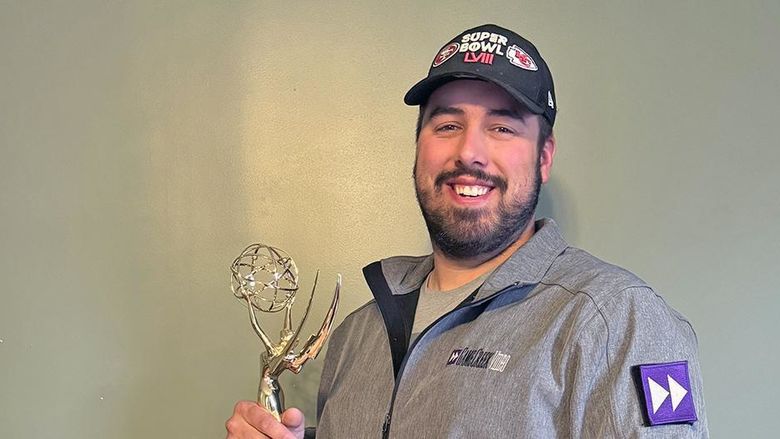
Presenters at Penn State Wilkes-Barre's Campus Safety Summit included, from left: Dale Osenbach, district commander for University Police and Public Safety; Robert Marmo, campus police officer; Brian Bittner, director of Emergency Management, University Park; Joe Mazzoni, regional Environmental Health and Safety coordinator, University Park; and Sean McHale, Penn State Wilkes-Barre director of business services and pandemic safety officer.
DALLAS, Pa. — Penn State Wilkes-Barre held a Campus Safety Summit on Nov. 16, gathering campus leaders, faculty and staff to share vital information regarding public safety and security. Other campuses are exploring using the safety summit as a template for their campus communities.
“Safety and security are high priorities for our campus. All of us share in the responsibility for the safety of our students and for each other, and for the security of our campus,” said Chancellor and Chief Academic Officer Dale Jones. “Because safety and security are so vital, it is imperative that we not become complacent about them. The Safety Summit was our way of taking some time out to focus our attention exclusively on safety and security. Our staff and faculty very much appreciated what they learned from our professional police, emergency management, and safety officers.”
The event was designed to introduce safety and security personnel while providing important information that can help enable successful responses to incidents and emergencies.
“We wanted to make sure everyone was aware of the resources at our campus and how to get in touch with them,” said Dale Osenbach, district commander for University Police and Public Safety. “The summit was a good way to provide the attendees with an overview of our department and duties. We also were able to share a bit of what goes on behind the scenes to make others aware of what we do. We are here to serve and want others to know how we can help them.”
Key safety and security representatives for Penn State Wilkes-Barre were included in the safety summit. Presenters included Osenbach and Campus Police Officer Robert Marmo, who covered changes in the police department at Penn State Wilkes-Barre, the structure of the department, recent incidents, events and programs; and Director of Business Services and Pandemic Safety Officer Sean McHale, who spoke about how he collaborates with other units on campus. Representatives from University Park were Director of Emergency Management Brian Bittner, who shared what the office does and how it works with local, county, state and federal partners; and Regional Environmental Health and Safety Coordinator Joe Mazzoni, who talked about how the department helps keep the campus community safe.
The summit was well received, with attendees thanking organizers and presenters for the information they received.
“Since the summit went so well, we think it would be helpful for all campuses to implement,” Osenbach said. “We would like to try to do something similar and will discuss the possibility of arranging other campus safety summits with campus leaders in the new year.”





